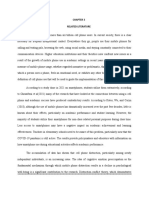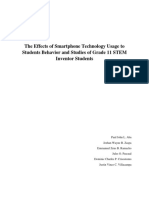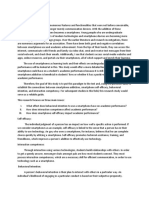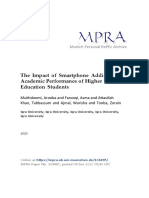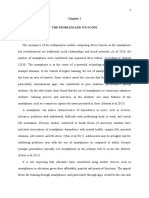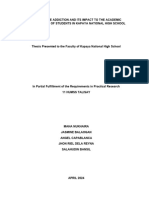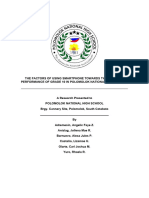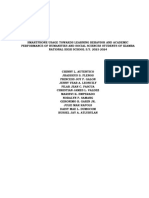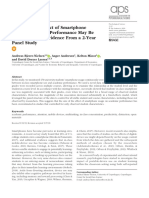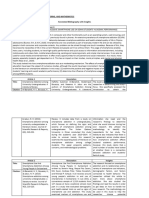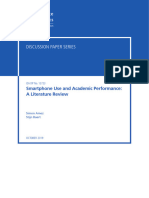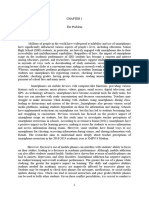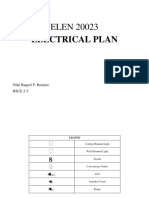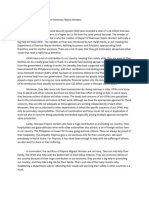1
The Impact of Being in a Relationship to the Academic Performance of Grade 12 students at
AMA Computer Learning College – Naga City
S. Y 2021-2022
AMA Computer Learning College – Naga City
January 2022
� 2
Abstract
Research on smartphone use among college students is extensive. Although numerous studies
have examined the relationships between mobile phone use and academic achievements, many
such studies have yielded mixed findings. Hence, the overarching goal of this meta-analysis was
to comprehensively synthesize existing research to investigate the effects of smartphone
addiction on learning. The authors included 44 studies (45 effects) in the analysis yielding a
sample size of N = 147,943 college students from 16 countries. The results show that smartphone
addiction negatively impacts students' learning and overall academic performance (Q (43) =
711.87, p < .001, r = −0.12). Further, findings suggest that the greater the use of a phone while
studying, the greater the negative impact on learning and academic achievement. Additionally,
the results suggest that skills and cognitive abilities needed for students’ academic success and
learning are negatively impacted. Implications of these findings are discussed, and
recommendations for future research are delineated.
Source:
The effects of smartphone addiction on learning: A meta-analysis
https://www.sciencedirect.com/science/article/pii/S2451958821000622#:~:text=Previous%20research
%20suggests%20that%20excessive,performance%20through%20decreased%20GPA%20scores.
Abstract
The study aims to investigate the impact of smart phones addiction on academic performance of
college students. For the purpose, we have used “Theory of Planned Behavior (TPB)” in
investigating the academic performance. Moreover, the study also emphasized that whether
� 3
smart phone self-efficacy, interaction competency and behavioral intention influences the
academic performance of college students in positive way and negative way using that TPB
model, data are collected from the students of Iqra University north campus using quantitative
research. In this research we have used correlation design because we have studied relationship
between Smartphone self-efficacy (SSE), interaction competency (IC), behavioral intention (BI)
and Academic performance (AA). This design tells us how much independent variables (SSE, IC
and BI) impact on dependent variable (AA).
From the finding we came to know that there is a positive relationship between behavioral
intention and academic performance. This proves that until and unless students are not
intrinsically motivated, they cannot use smart phone in a positive way……
The limitation of the study is; the study is carried out by the students of university due to limited
time period. Moreover, time constrains also act as a barrier in collecting many responses. Hence,
the sample size might not be appropriate to increase the generalizability of this paper. Therefore,
the study can’t apply on other regions. Furthermore, more variables should be taken into
consideration to examine the overall Smartphone impact in a holistic way.
Source:
The Impact of Smartphone Addiction on Academic Performance of Higher
Education Students
https://mpra.ub.uni-muenchen.de/104485/1/MPRA_paper_104485.pdf
� 4
Abstract
The use of smartphone is gradually becoming a compelling learning tool used to enhance
teaching and learning in distance education. Its usage ensures flexible course delivery, makes it
possible for learners to access online learning platforms, access course resources and interact
digitally. The purpose of this study was to examine the use and effects of the smartphone as a
learning tool in distance education at the University of Ghana. The study was based on the
Technology Acceptance Model (TAM) and included 294 total respondents. The survey research
design and questionnaires were employed for the study. The major objectives of the study were:
to find out the students’ perceived ease of use of a smartphone in learning activities, to determine
the perceived usefulness of smartphone in students’ academic achievement, to investigate the
effect of the use of the smartphone in students’ learning activities, and to investigate the factors
that inhibit the use of a smartphone as a learning tool. The findings revealed that the distance
learning students find it easier to use a smartphone in their learning activities. The findings also
revealed that the use of smartphones performed remarkable roles among the distance learning
students of the University of Ghana in their academic activities. However, the findings found a
negative effect on the distance learning students and revealed some inhibiting factors in the use
of smartphones which included smartphones freezing during important learning moments,
unstable internet connectivity, intruding calls during class hours, and the screen and key sizes,
which made the smartphone uncomfortable for learning, as compared to laptops
Source:
THE USE AND EFFECT OF SMARTPHONES IN STUDENTS’ LEARNING
ACTIVITIES: EVIDENCE FROM THE UNIVERSITY OF GHANA, LEGON.
https://digitalcommons.unl.edu/cgi/viewcontent.cgi?article=6260&context=libphilprac



